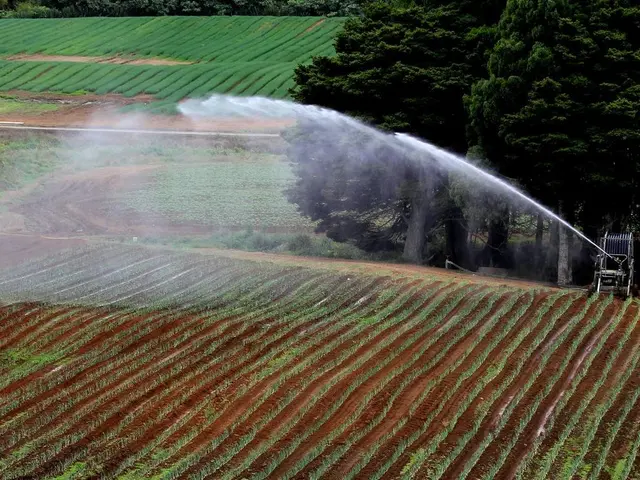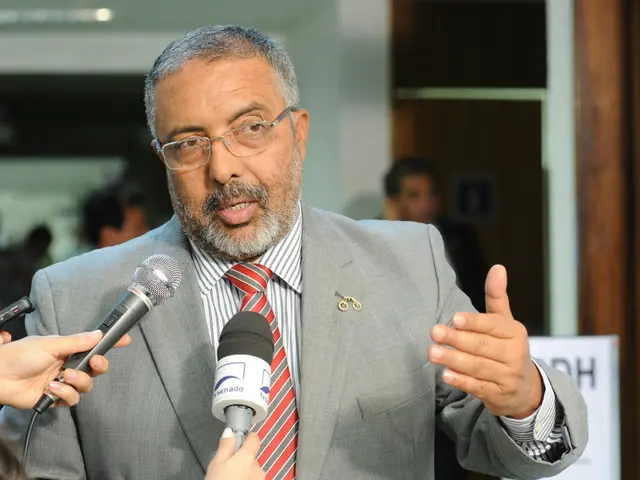Air India Mishap: Speed of New Administration's Efforts to Rejuvenate Ailing Airline
Rebuilding Air India: Resilience and Recovery After Tragedy
By Linus Bauer, Special to Gulf News
Air India's metamorphosis has been a global spectacle, propelled by the Tata Group's robust backing. The airline, aiming to reinvent itself as a premier global carrier, has embarked on an extensive overhaul, investing in fleet modernization, service upgrades, operational integration, and digital modernization. However, last week's heart-wrenching crash of a Boeing 787 Dreamliner departing from Ahmedabad has posed the toughest test yet for the airline's resilience.
A Test of Resilience in Skies
Under Air India's transformation blueprint, Vihaan.AI, the airline has vowed to evolve into a nimble and competitive global airline within five years. This ambitious plan involved consolidating four airline brands, revamping customer experience, recruiting new talent, and placing the largest commercial aircraft order in aviation history.
Half of Air India's wide-body fleet has already undergone interior upgrades, and the airline has delved into new long-haul markets with a growing codeshare and alliance network. This momentum now confronts a stern challenge. The crash involved one of Air India's Dreamliners, an aircraft that underwent routine maintenance and was assigned to a high-yield international route.
Initial reports suggest a failure to achieve lift, raising questions about flight configuration, systems readiness, and human factors. Regardless of the final cause, the incident undermines the narrative of smooth transformation and fuels doubts about safety oversight, procedural discipline, and technical training.
Questioning Operational Credibility
The immediate impact is on operational credibility. In a competitive, global aviation market, brand perception can alter swiftly. Passengers who were beginning to return to Air India, impressed by improved service and modernised cabins, will now seek reassurances.
International regulatory bodies and corporate clients will scrutinize safety protocols, cockpit decision-making frameworks, and maintenance governance. This is where the true test lies. Transformation programs often prioritize customer-facing improvements over operational culture and control systems.
For Air India, this tragedy necessitates urgent, visible reinforcement of safety culture, regular pilot training, stringent checks on maintenance routines, and clear accountability at every level within the organization.
Reassessing and Progressing
Crises do not destroy brands; badly managed responses do. Air India must now lead with absolute transparency. Frequent public briefings, independent oversight, and a clear timetable for action will be essential in restoring confidence among both domestic and international audiences.
This is not merely a recovery phase, but an opportunity for acceleration. Operational safety, engineering standards, and crew performance must be prioritized, supported by board-level governance and external verification. An audit of every Dreamliner in the fleet, combined with internal simulations, system tests, and performance reviews, must be conducted.
Stewardship in the Face of Adversity
The Tata Group's stewardship of Air India has brought discipline, capital, and strategic vision. However, the leadership must now demonstrate that this is a transformation with depth - one that encompasses not merely financial turnaround or product refresh, but an end-to-end cultural shift.
That means governance structures capable of promptly identifying weak signals, responding to risk early, and embedding safety as an uncompromising value. This is also a test of the new leadership team's resilience. Air India's management must navigate emotional complexity, public scrutiny, and operational continuity concurrently, while consolidating multiple legacy cultures under a single, high-performance ethos.
A Turning Point, Not a Setback
Despite the tragedy, this moment need not mark a derailment. Many of the world's top airlines have faced major incidents in the past and emerged stronger through introspection, system reform, and cultural reset. Air India possesses the strategic foundation, financial backing, and organisational intent to do the same.
What differentiates the next phase will be how the airline recovers: with humility, accountability, and operational integrity. If it does, this crisis could ultimately serve as a painful - but pivotal - chapter in the airline's transformation story.
The writer is founder of BAA & Partners.
air india | air india crash | Sign up for the Daily Briefing
Stay updated with the latest news and insights straight to your inbox.
- The heart-wrenching crash of an Air India Dreamliner has posed a significant test for Air India's resolve in its cultural transformation, raising questions about safety oversight, procedural discipline, and technical training.
- In the wake of the tragedy, Air India must now prioritize operational safety, engineering standards, and crew performance, while demonstrating transparency and accountability to restore confidence among passengers, regulatory bodies, and corporate clients.
- The Tata Group's stewardship of Air India required not just financial turnaround or product refresh, but a comprehensive cultural shift, embedding safety as an uncompromising value and fostering a high-performance ethos.
- The incident presents an opportunity for Air India to learn from past airline crises, embrace introspection, system reform, and cultural reset, and emerge stronger in its transformation journey.







